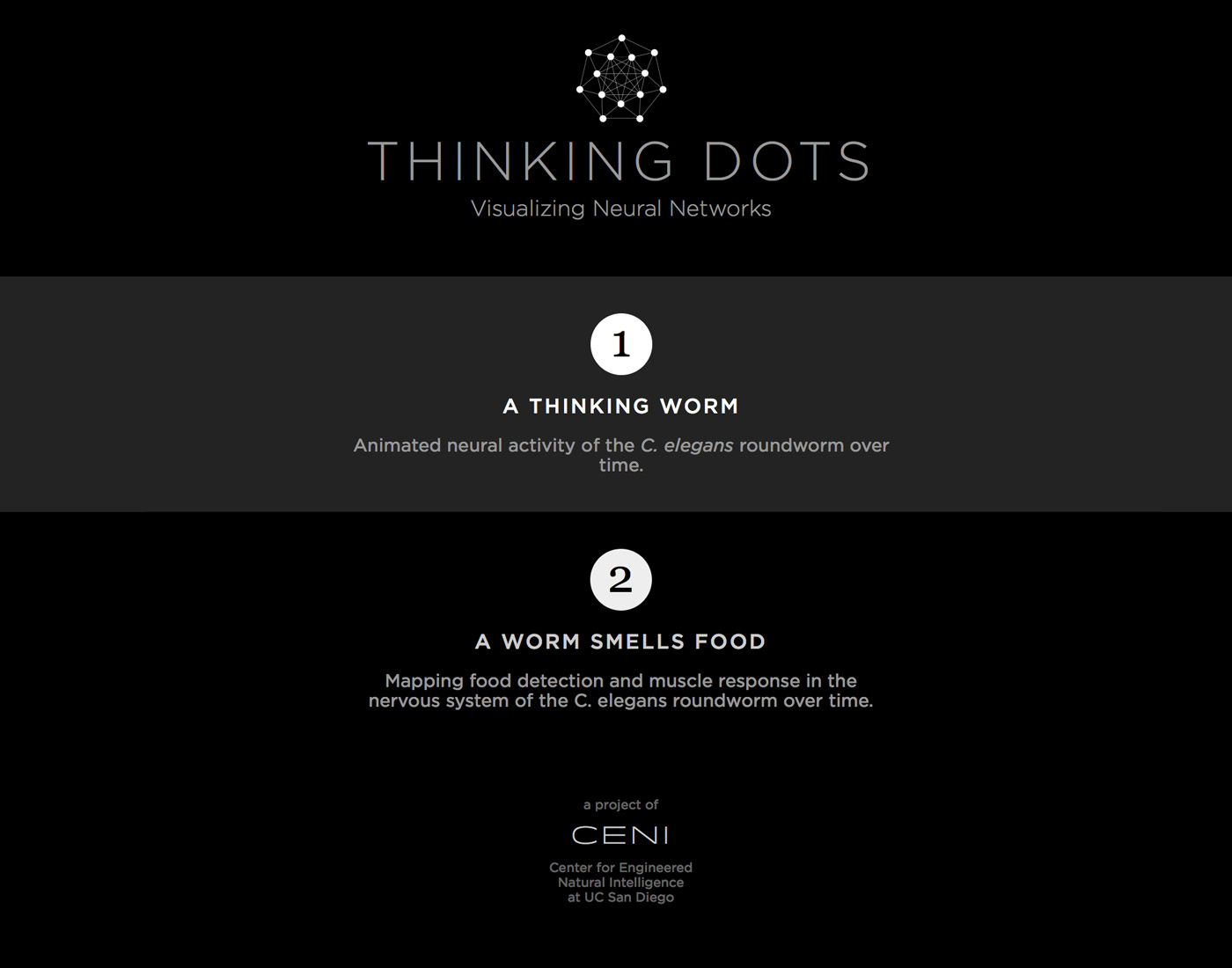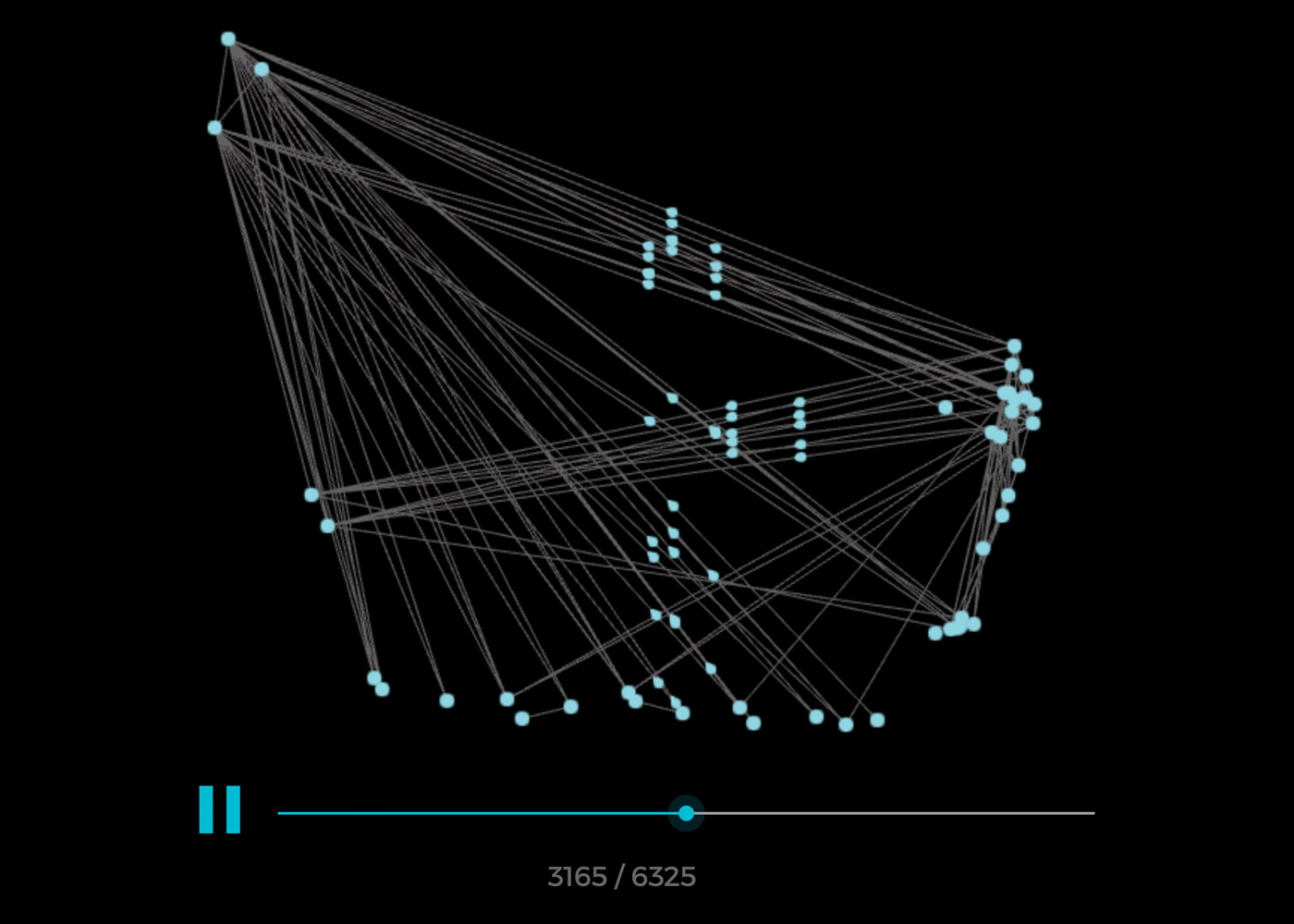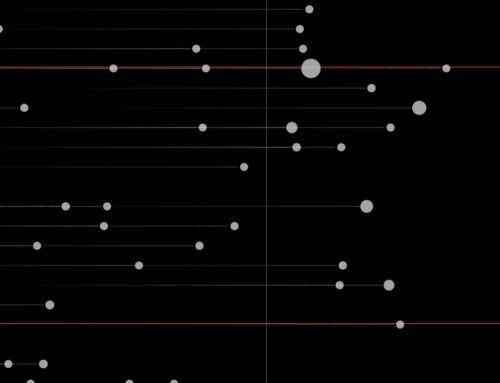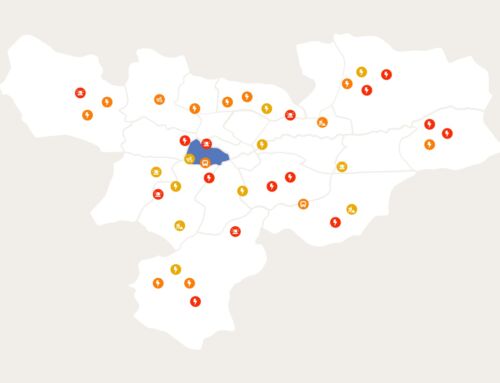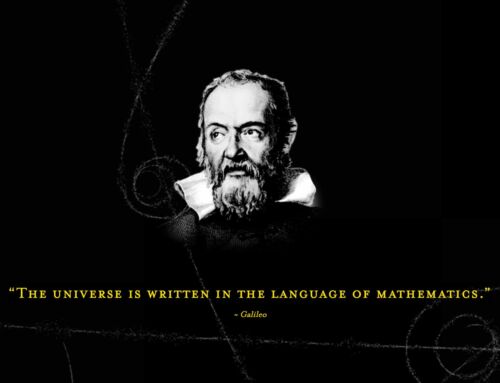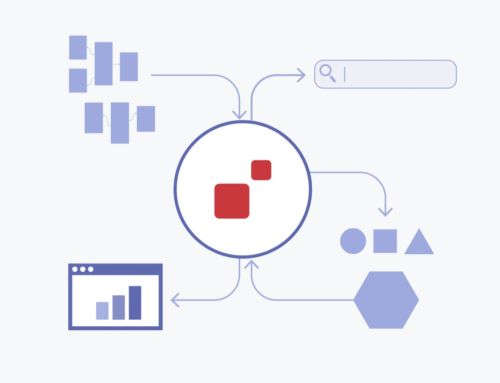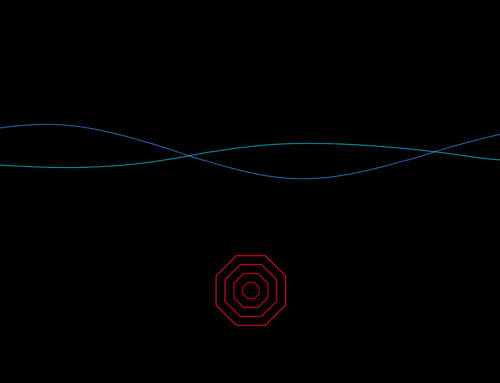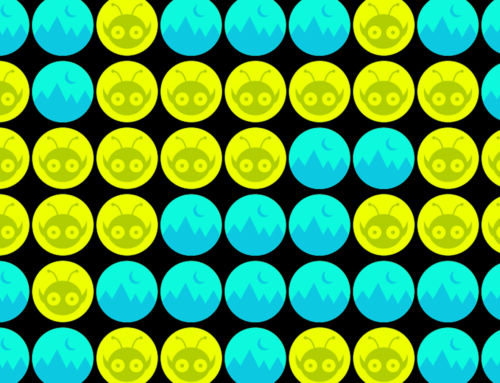Thinking Dots
After reading up on neural networks, I was curious if there might be an interactive way to illustrate the basic mechanics of the brain – to show how signals traveling between neurons translate to thought and behaviors. I wondered if, by assigning a simple set of activation rules to each node in a network, and basing the output of those rules on the state of connected nodes, would the end result be akin to “thinking?”
I decided I was in over my head, so I sent emails to a few scientists working in the fields of computational neuroscience, and ended up connecting with Dr. Gabe Silva, director of the Center for Engineered Natural Intelligence at UC San Diego. He said they were also looking for away to visualize and model the dynamics of neural networks, specifically that of the c. elegans roundworm – the first organism to have it’s connectome (neuronal wiring diagram) fully mapped. His lab had collected data showing that the distance between neurons was a key factor in determining the sequence in which connected neurons would fire, and would, in turn, determine how the worm reacts to its environment. With the help of some diligent programmers and research assistants, we created a slow-motion brain simulation that maps the interactions between the worm’s sensory and motor neurons. In other words, it shows how, when a worm smells food, it’s muscles make it swim toward it. There’s still lots of work to do in this field, and I’m hoping to do more of it.

